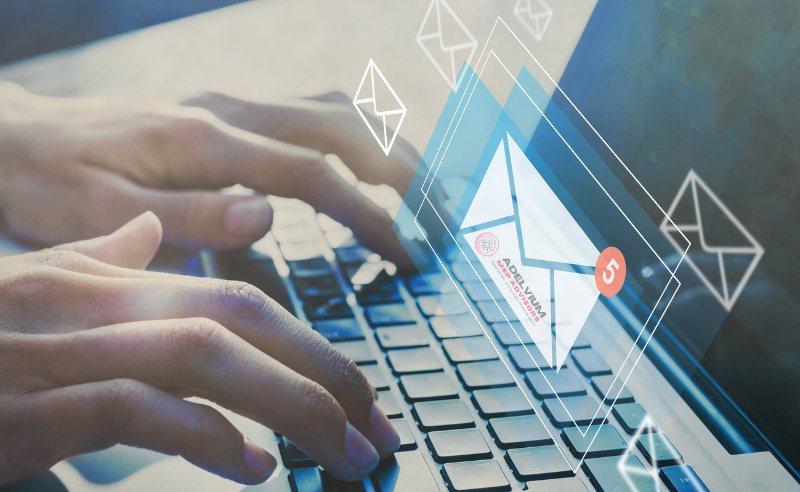Top Features to Look for in an Email Security Solution
Email is one of the most essential tools for business communication, but it is also a primary target for cyberattacks. Phishing, ransomware, business email compromise (BEC), and spoofing attacks cost businesses billions annually. Small and medium-sized businesses (SMBs) are particularly vulnerable, as they often lack the dedicated IT security teams and enterprise-level protections of larger corporations.
Choosing the right email security solution is crucial in safeguarding sensitive information, maintaining regulatory compliance, and preventing costly breaches. This guide explores the must-have features of an effective email security solution and how businesses can evaluate the best options to protect their communications..
Why Email Security Matters
Cybercriminals use email as an entry point to steal data, install malware, and impersonate trusted contacts. Beyond financial damage, email breaches can erode customer trust, disrupt operations, and lead to regulatory fines.
A strong email security solution mitigates these risks by:
Blocking malicious emails before they reach inboxes
Detecting and neutralising phishing and ransomware threats
Encrypting sensitive data for secure communication
Preventing accidental data leaks and compliance violations
Investing in email security isn’t just about protecting against cyber threats; it’s about ensuring business continuity and preserving trust.
Essential Features of an Email Security Solution
When choosing an email security solution, look for these critical features to ensure comprehensive protection:.
Advanced Spam Filtering Spam emails clutter inboxes, waste employee time, and often contain malicious links. A high-quality spam filter should:
- Use AI-driven algorithms to distinguish spam from legitimate messages
- Adapt to new spam techniques using machine learning
- Block emails based on sender reputation, content analysis, and embedded links
Real-World Example: A financial firm reduced phishing risks and saved hundreds of hours annually after deploying a spam filter that blocked 95% of junk emails.
Anti-Phishing Protection
- Phishing remains the most common email attack method. An effective solution should:
Scan emails in real-time for fraudulent links and malicious attachments
Use AI-powered analysis to detect impersonation attempts (e.g., CEO fraud)
- Flag or quarantine suspicious emails before users open them
Case Study: A healthcare organisation prevented a high-value payment fraud when their anti-phishing tool flagged an email attempting to impersonate a trusted vendor.
Email Encryption for Data Protection
Encryption ensures that sensitive information is protected in transit and at rest. Look for:
- Automatic encryption for emails containing financial or personal data
- End-to-end encryption to prevent unauthorized access
- Compliance-friendly encryption (e.g., HIPAA for healthcare, PCI DSS for finance)
Example: A law firm’s encrypted email system ensured client confidentiality while simplifying compliance with regulatory requirements.
Advanced Threat Detection
Cyber threats evolve rapidly, and signature-based detection is no longer enough. Modern email security should include:
- Behaviour-based detection to identify unusual patterns in email activity
- Sandboxing technology to isolate and analyse suspicious attachments
- Threat intelligence integration to stay updated on emerging cyber threats
AI and Machine Learning Capabilities
AI-driven email security improves threat detection, accuracy, and adaptability by:
- Analysing large volumes of email data to identify emerging threats
- Reducing false positives to improve workflow efficiency
- Predicting potential attack vectors before they cause harm
Real-World Impact: A global retail chain reduced phishing incidents by 87% within six months by implementing an AI-powered email security system
Data Loss Prevention (DLP)
Accidental data leaks can be as damaging as cyberattacks. DLP features should:
- Identify and block outgoing emails containing sensitive information
- Enforce policies that prevent employees from sharing confidential files externally
- Provide audit trails for compliance and incident response
User Training and Awareness Tools
Even with the best technology, human error remains a major security risk. Look for solutions that include:
- Simulated phishing attacks to test employee awareness
- In-email security prompts to alert users before clicking suspicious links
- Dashboards to track employee progress on cybersecurity training
Technology can stop many threats, but well-trained employees add an extra layer of defence.
AI & Machine Learning: The Future of Email Security
Real-Time Threat Analysis
AI and ML process millions of emails daily to identify patterns linked to phishing, malware, and fraudulent emails.
Enhanced Accuracy
Unlike traditional rule-based systems, AI minimises false positives while improving threat detection.
Proactive Defence
AI predicts new attack methods and automatically updates defences, preventing emerging threats before they spread.
Example: A financial institution using AI-driven email security significantly reduced BEC fraud attempts and improved compliance enforcement.



